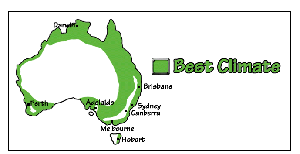Palms and ferns are often associated with tropical climates but ‘Burke’s Backyard’ recently looked at some palms and ferns which can grow in colder areas.
Palms for cool climates
- Dwarf sugar palm (Arenga engleri): A small growing, clump-forming palm to 2.5-3m (8-10′). It has distinctive fish-tail shaped ends to its leaves and is extremely attractive. Growing best in semi-shade, it can tolerate temperatures down to -7°C.
- Nikau palm (Rhopalostylis sapida): This palm is native to New Zealand and is the southernmost naturally occurring palm in the world. It is slow growing – to 6m (20′) after many years – with a very attractive trunk. Suited to a shady sheltered position with humidity and likes a cold climate – it would struggle north of Brisbane. This palm has a distinctive ‘feather-duster’ appearance to the crown.
- Lady palm (Rhapis excelsa): A multi-stemmed dwarf fan palm. This slow growing palm forms dense clumps with leaves to the ground. Slender stems are covered with brown ‘hessian’. These grow best in filtered light.
- Wedding palm (Lytocaryum weddellianum previously known as Microcoelum weddellianum): This small growing palm has fine weeping foliage and a narrow trunk to 2m (6’6″). It is good as an understorey planting and grows best in a semi-shaded to shady position in humid, coastal areas. They are deceptively hardy and will take frost and exposure to sun.
- European fan palm (Chamaerops humilis): Attractive fan-like leaves. Best in sunny position but will tolerate cold down to -15°C.
- Dypsis baronni: This clump forming palm from Madagascar looks like golden cane palm (Chrysalidocarpus lutescens). It grows to 2.5m (8′) with a multi-trunk. Can survive to -6°C and still show new growth.
- Walking stick palm (Linospadix monostachya): A slender, small growing feather-leaved palm which prefers a shady position in humid coastal areas. It will survive to -10°C.
- Bismarck palm (Bismarckia nobilis): Big strong growing palm for sunny position with blue-green foliage. Grows well in tropical areas and down to -6°C.
- Windmill palm (Trachycarpus fortunei): The trunk of this palm looks like it is covered with thick hessian. It grows to 4m (13′) and will tolerate either sun or shade.
Note: The wedding palm, bismark palm and Dypsis baronni all need a thick mulch cover (around 10cm or 4″) if planted outdoors. The mulch cover is to insulate the roots from the cold.
Cool climate ferns
- Malaysian pteris fern (Pteris dalhousiae): This fern grows to 80cm (2’8″) in an upright and dense clump. It is cold hardy and suitable for well lit position indoors. This fern can also be planted outdoors in a shady situation.
- Fijian lace fern (Sphenomeris chinensis): A good substitute for a maidenhair fern which grows to 40cm (16″). It has attractive bright green foliage with red stems to fronds. This fern is best suited to morning sun and filtered afternoon sun. Suitable for well lit position indoors.
- Coral fern (Gleichenia microphylla): A scrambling fern which is self-supporting to 1m (3’3″). Keep this fern moist at all times. Best situated in a strongly lit position.
- Asian shield fern (Dryopteris wallichiana): This fern has attractive foliage and is a good substitute for a small tree fern. It grows to 1m x 1m (3’3″ x 3’3″) and has multi-crowns. After a couple of years this fern will have 50-60 fronds.
- Asplenium lividum: This very cold hardy fern comes from Zimbabwe. It is a clumping fern with a weeping habit.
- Central American lace fern (Cheilanthes myriophylla): The fronds of this attractive fern are a blue-grey colour and are fine and weeping. Suitable for an exposed position.
Availability and cost
The segment was filmed at:
Fletcher’s Fern Nursery
62 Walker Road
Seville, VIC, 3139
Phone: (03) 5964 4680
The nursery is open 9am-5pm seven days a week, except for Tuesdays when it is closed until 1pm.
Palms: These palms may be available from your local nursery or they may be able to order them in. Palms in 20cm (8″) pots cost between $12 and $20, with the exception of the slow-growing Rhapis excelsa which costs $20-$30.
Ferns: Fletcher’s Fern Nursery sell their ferns in 15cm (6″) pots for $6.50. 20cm (8″) pots are available for $17.50. You may have trouble finding these ferns in other states.
Further reading
Palms in Australia by David Jones (Reed Publishing, 1987).
ISBN 0730100073
A Handbook of Ferns by Christopher J. Goudey (Lothian Publishing, 1988). ISBN 0850912822
Growing Ferns by John Mason (Kangaroo Press, 1990) ISBN 0864172818.
Specialist nurseries:
Other specialist palm nurseries are:
- Palm Land Nursery
327 Mona Vale Road
Terrey Hills, NSW, 2084
Phone: (02) 9450 1555 - The Palm Place
110 Wappa Falls Road
Yandina, QLD, 4561
Phone: (07) 5446 7621 - All Palms Garden Centre
37 Birnam Road
Canning Vale, WA, 6155
Phone: (08) 9455 1235
Palm and fern societies
There are fern societies and palm societies in several states throughout Australia including the ones listed below who can put you in contact with groups in your area.
- Palm and Cycad Society (Sydney branch)
Phone: (02) 9450 1553 - Palm and Cycad Society of Australia (Queensland branches)
Phone: (07) 3379 1828 - Palm and Cycad Society of Australia (Western Australia branches)
Phone: (08) 9330 3101 - Fern Society of Victoria
Phone: (03) 9337 9793



